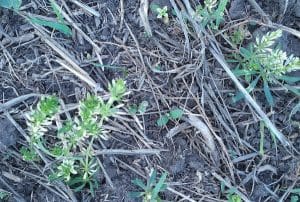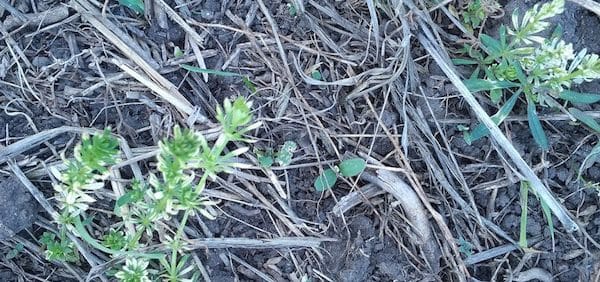For in-crop management of cleavers in canola, both glyphosate and glufosinate work best on smaller spring-germinating plants. Early herbicide application is also best for crop yield. Use a rate and water volume suitable for cleavers.
Find details in the provincial crop protection guides: crop protection for your province: Alberta Saskatchewan Manitoba
Help from clomazone pre-seed applications. Growers who used clomazone with glyphosate for pre-seed control of cleavers will want to see how well it worked before making in-crop herbicide decisions. Clomazone is soil active only and must be on prior to emergence of the cleavers to be effective. Any contact activity on emerged cleavers would be strictly from the glyphosate in the mix. If a lot of rain came after the pre-burn application, reduced control can result from dilution of the herbicide in the soil. Clomazone also requires 5-10mm of rainfall for activation to be effectively moved into the soil. As a result, the range in efficacy of clomazone can be broader than one would expect from foliar in-crop sprays. However, if the clomazone-glyphosate pre-seed mix did not kill cleavers, it often stunts them at the 2- to 3-whorl stage, making them easier to kill with the in-crop application.

Quinclorac still not an option. Quinclorac is still not a recommended control option in canola because of ongoing concerns about residue limits in one of our largest export markets. Until exporters and processors are confident that they can ship quinclorac-treated canola to China without trade concerns, growers are advised to avoid this marketing risk by using other cleavers control methods.
Further reading:
Cleavers management from Keep It Clean
Quinclorac and canola
Keep it Clean – Five simple tips to get your canola ready for export

